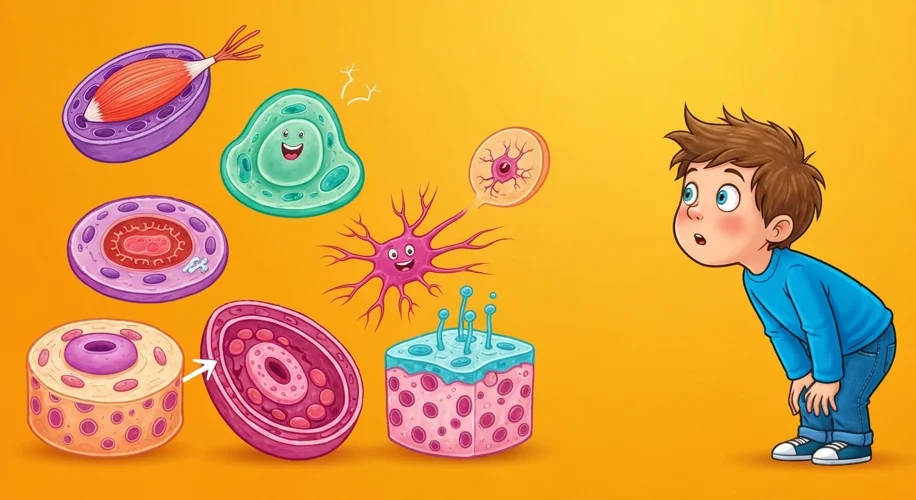Sometimes, the most profound scientific questions come from the most unexpected places. Today, my 7-year-old asked me, “Mom, what makes us move? What’s inside us that makes everything work?”
It’s a question that, at its core, gets right to the heart of biology. It’s easy to get lost in the complexities of organs and systems, but the answer starts much, much smaller. Think of it like building a house. You don’t start with the roof; you start with the bricks.
For us humans, those essential building blocks are called cells. Every single part of your body – your skin, your muscles, your brain, even your bones – is made up of trillions of these tiny, microscopic units.
Did you know that a single human body contains roughly 30 to 40 trillion cells? That’s a number so big it’s hard to even imagine! And these aren’t just static little blobs. Each cell is like a miniature factory, carrying out all the essential functions that keep us alive.
So, what do these tiny builders do?
- They get energy: Cells take in nutrients from the food we eat and convert them into energy. This is what powers everything, from your brain thinking about math problems to your legs running on the playground.
- They build and repair: Just like construction workers, cells build new tissues and repair damage. When you get a cut, cells get to work immediately to close the wound.
- They communicate: Cells talk to each other! They send signals that tell your heart to beat, your lungs to breathe, and your muscles to contract. This communication is how your body coordinates all its actions.
- They replicate: To keep our bodies functioning and growing, cells divide and create more cells. This is how we grow from babies into adults and how our bodies replace old or damaged cells.
Think about movement, for instance. When you decide to pick up a toy, a signal starts in your brain, traveling down nerves to your muscles. The muscle cells receive this signal and, using the energy they’ve stored, contract. It’s this coordinated action of millions of muscle cells that allows you to move your arm and grasp the toy.
Even something as simple as blinking your eyes involves intricate cellular work. The muscles around your eyes contract, the nerves send signals, and your eyelids close and open in a smooth, controlled motion. All thanks to those tiny, hardworking cells.
It’s fascinating to realize that beneath all the visible complexity of our bodies lies this incredible, organized world of microscopic life. It’s a constant reminder that even the smallest components play a vital role in the grander scheme of things. So, the next time you marvel at how our bodies work, remember the trillions of tiny builders inside, doing their jobs every second of every day.

